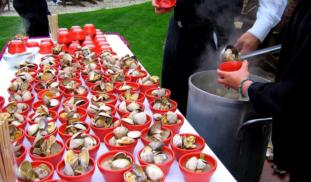Please wait...
About This Project
For commercial shellfish farmers and recreational hunters alike, marine biotoxins pose a significant threat to health and welfare. With this project, we aim to create an inexpensive and easy-to-use test kit for the detection of the small molecules auxin and theophylline using engineered yeast strains and DNA aptamers on a paper device. We hope that this project paves the way for a new class of biosensors capable of detecting a wide range of molecules, including the shellfish toxin okadaic acid.

Browse Other Projects on Experiment
Related Projects
Highly-sensitive, real-time enzyme methane oxidation rate measurements using an electrochemical assay
A low-cost, rapid, and highly sensitive assay is needed to measure methane gas oxidation rates by methane...
Engineering of a suction cup stethoscope for non-invasive monitoring of physiological sounds in baleen whales
Baleen whales are large-bodied predators that, despite their critical role in marine ecosystems, our understanding...
Building a better fish: Engineering fish for smarter aquaculture
What if we built a better fish instead of depleting wild fisheries? Natural stocks can’t keep up with demand...


